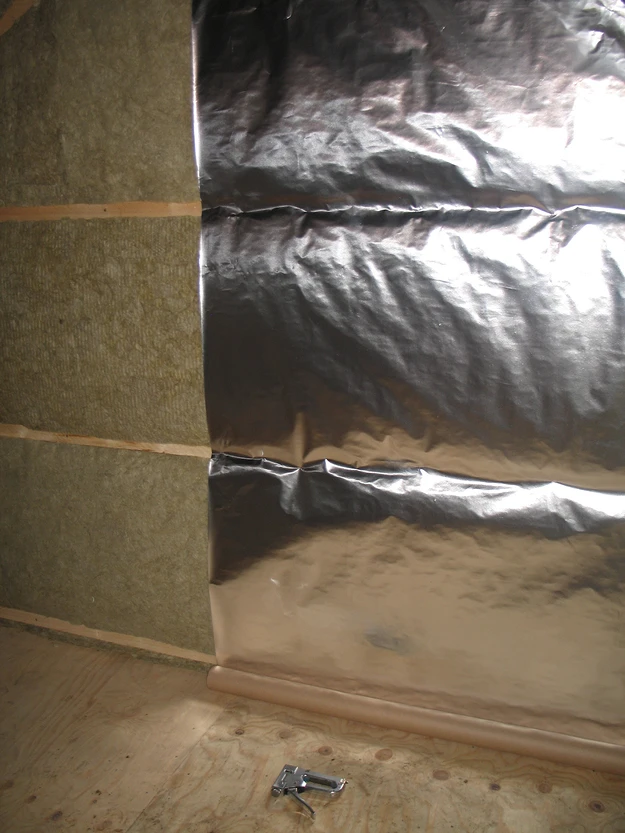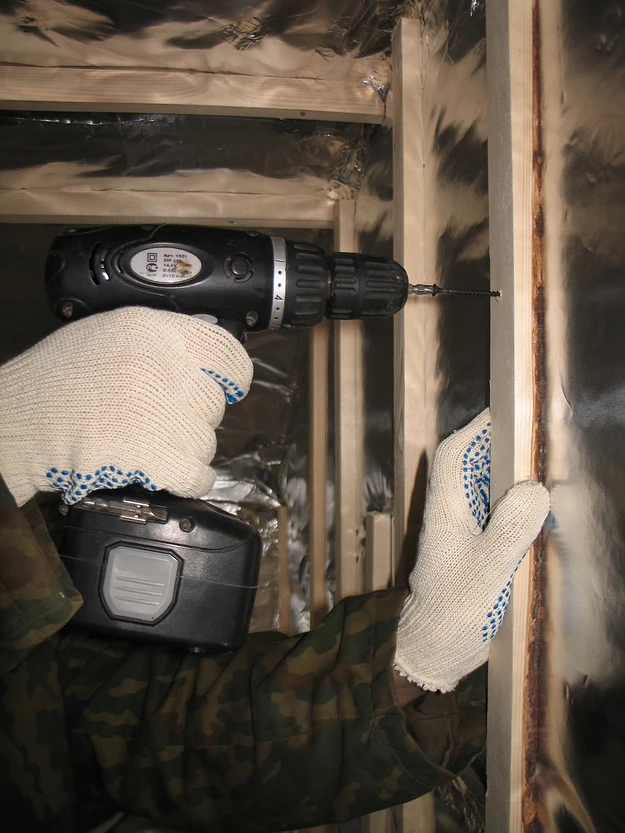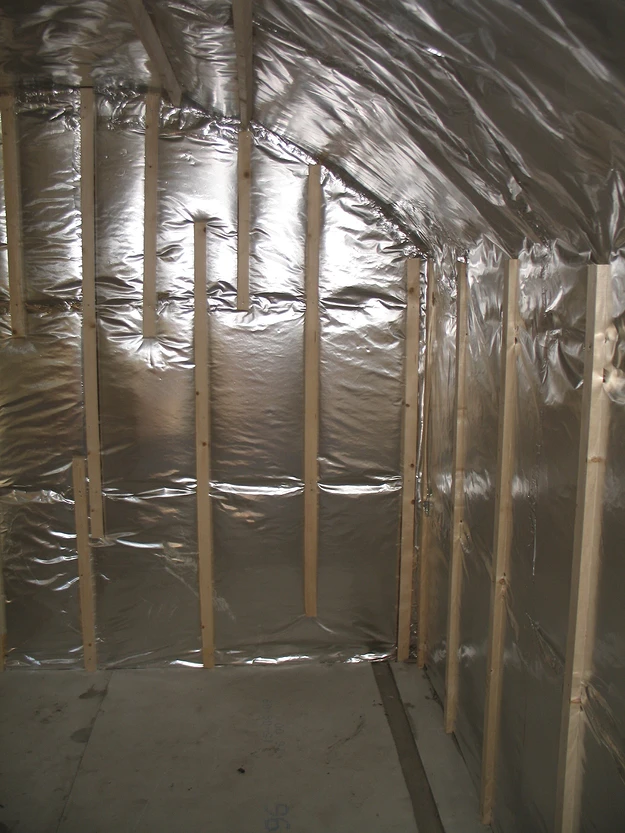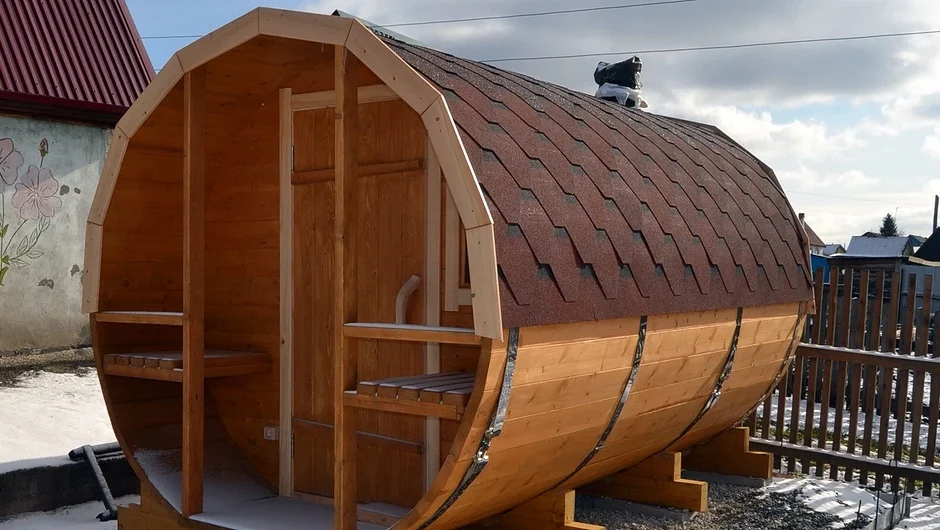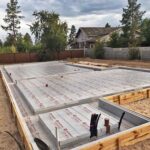We talk about the features of the wood frame, beams, rounded logs, and other materials for building a bathhouse.
Most often, the walls of a bathhouse are based on a wooden structure. Only in forest-poor regions are brick and block baths built along with frame ones, although a stone wall always requires a stronger foundation than a wooden one.
1. Wood frame
A frame construction with clapboard cladding on the inside, a 100 mm thick middle layer of mineral wool, and facade material on the outside will be inexpensive and will allow you to quickly heat the bathhouse. It is being built according to the technology but with some adjustments regarding the choice of materials (foil vapor barrier is chosen for a bathhouse) and the construction of the floor (additional protection from moisture is required here). Today you can purchase a ready-made volumetric modular bathhouse of a frame structure, equipped with all the necessary equipment. It will be brought to the site and installed on a pile-screw foundation in just a day or two. But it will cost one and a half to two times more than when building it yourself.

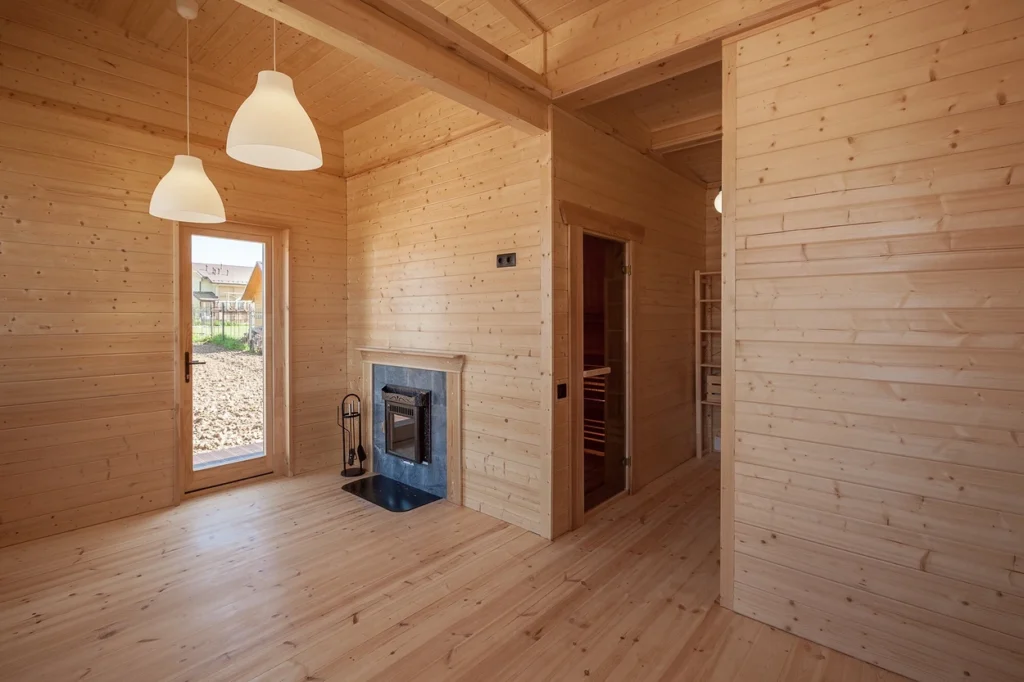
2. Beam construction
Mini-timber is the name given to boards 50 mm thick, placed on edge, and assembled into a log house with corner outlets. This is one of the most economical solutions for bath walls. The load-bearing wall should be insulated from the inside with mineral wool slabs 100-150 mm thick and sheathed with clapboard, taking into account the possibility of dimensional fluctuations of the board due to changes in humidity: the sheathing should be sliding, and gaps should be left near the floor and ceiling. The insulation in such walls not only provides a vapor barrier from the inside but also protects against atmospheric moisture, which can penetrate through the cracks between the boards.
3. Barrel sauna
The barrel sauna looks unusual and arrives at the site completely ready. But products with one-board walls can only be heated in the summer, and with internal insulation, the structure will cost significantly more than a classic frame structure. In any case, we are talking about a very cramped steam room for a maximum of three people and a tiny dressing room.
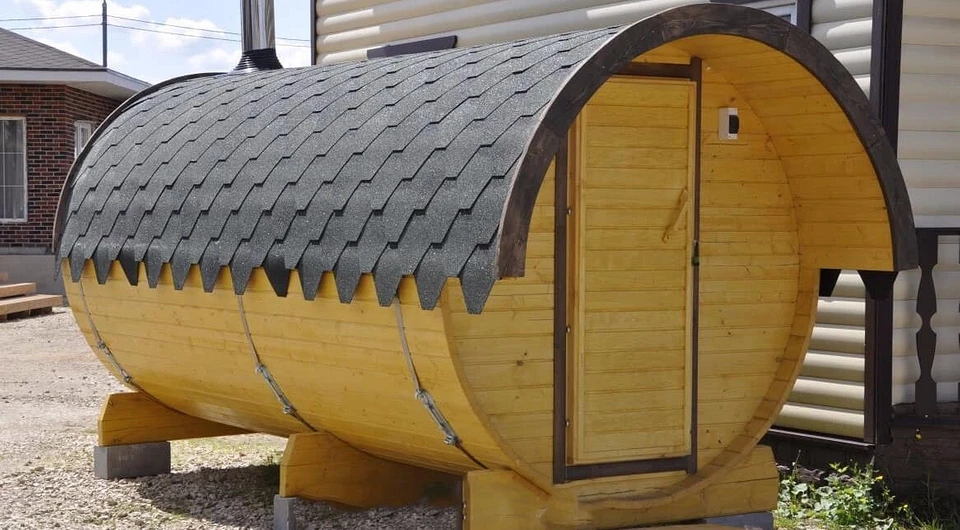
It is difficult to say exactly where the idea of a barrel sauna was born. There are quite old saunas of this type in Finland. Similar baths have been built in Altai for a long time.
4. Logs
Logs in forest regions are still inexpensive. You can purchase a ready-made log bathhouse 4×6 m, with a steam room, a dressing room, and a porch terrace. The main disadvantages of a log house are that it will require caulking and will shrink within a year or two, which will complicate finishing, installation of doors and windows, as well as installation of equipment, including a sauna stove (sliding sheathing systems, elastic passages, etc. will be required ). Is it necessary to line the steam room with a clapboard from the inside if a bathhouse is being built and insulation is not provided? As a rule, this is advisable, as it prevents direct splashes of water on logs and tow and thus extends the life of the walls. However, it is necessary to ensure ventilation of the logs under the casing: make lathing and provide vents near the floor and ceiling, and not sheath the bathhouse over hewn logs.
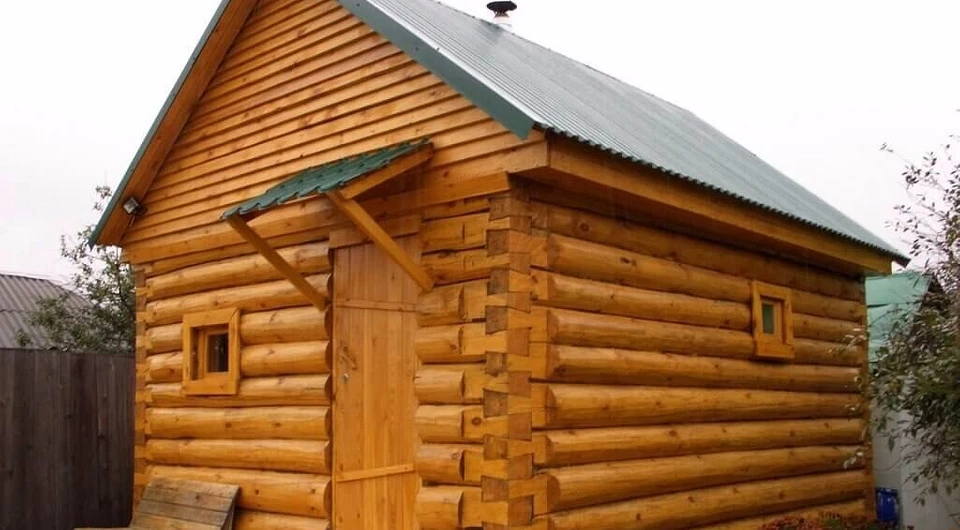
5. Four-edged beam
Four-edged timber with natural humidity is one of the most affordable lumber. A timber frame, as a rule, does not cost more than a regular log frame. In practice, it is better to cut into a bowl (with outlets), having first planned the timber along the street surface, so as not to then sheathe the building from the outside. To make the building look more solid, you can use a beam with a cross-section, for example, 100×200 mm, placed on a narrow edge. Interventional seams in a timber frame are usually blown out, so the inside requires lining with mineral wool insulation (after shrinkage has been completed or on a sliding sheathing).
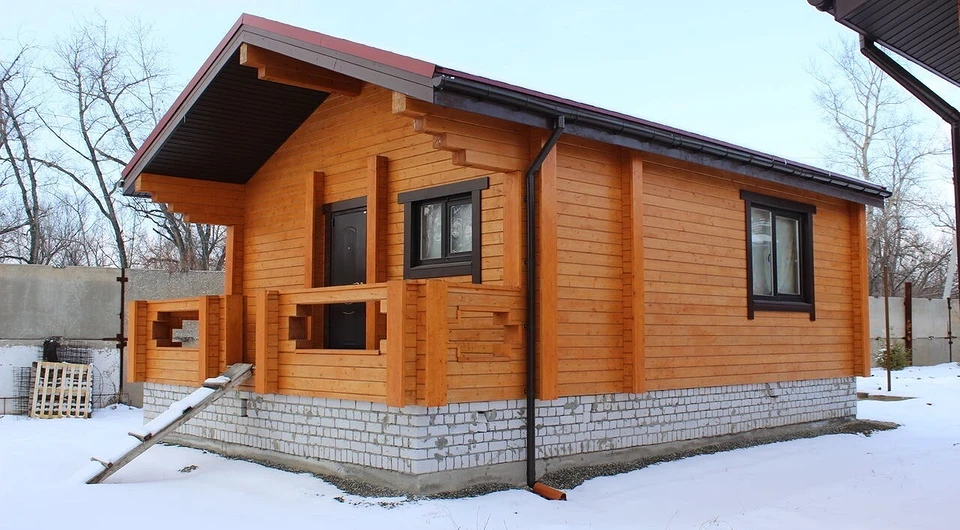
One of the most popular and affordable materials is planed timber with a section of 100×100 mm. But the steam room will have to be insulated.
6. Glued laminated timber
Glued laminated timber does not shrink, does not need external cladding, walls made from it are not blown through, and the glue that holds the lamellas together is heat- and water-resistant. The material, in principle, is suitable for both a traditional bath and a sauna. Alas, it is not cheap and is constantly becoming more expensive. Walls made of laminated timber with a thickness of less than 150 mm need to be insulated from the inside with a layer of mineral wool 40-70 mm thick.
7. Carriage
A carriage is a log sawn on both sides, and a two-edged beam is a very beautiful material, the production of which requires large-diameter trunks. Cutting bowls and grooves, as a rule, must be done by hand, which further increases the cost of construction. At the same time, a log house made from a carriage has all the disadvantages of a conventional log house. Lafet, dead kelo pine, and cedar logs belong to the category of super premium wall materials.
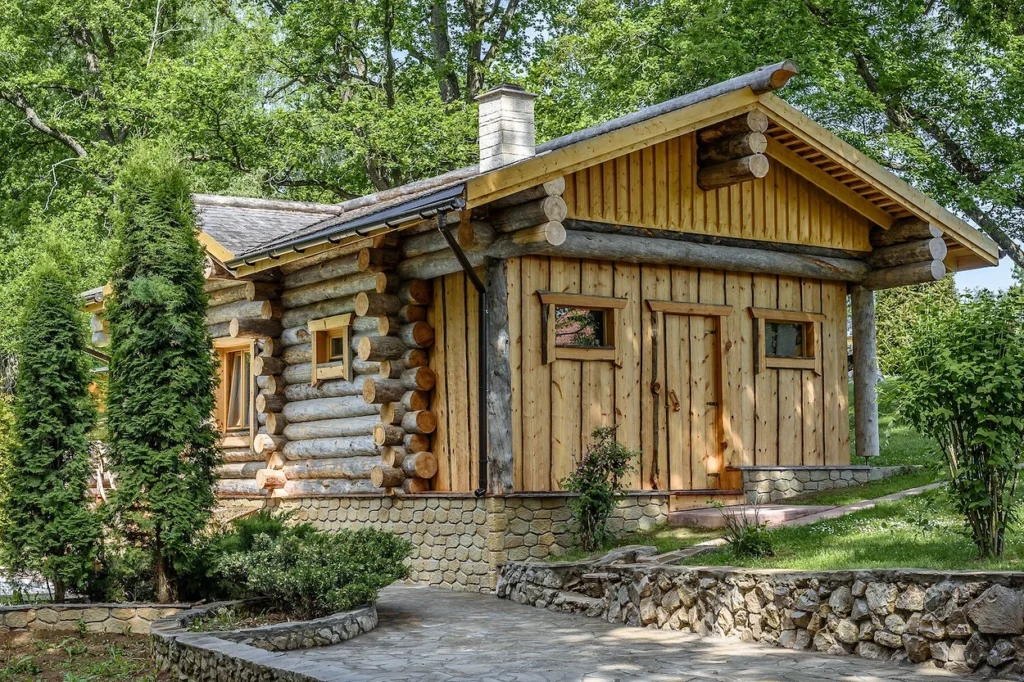

Insulation
The walls of a modern steam room are most often insulated from the inside – this allows you to subsequently save energy and warm up the room faster. The optimal insulation is mineral wool; You should not insulate a bathhouse with polystyrene foam, as it is susceptible to thermal degradation.
The insulation must be vapor-proofed from the inside with foil or foil paper. You can do without insulating log or beam walls in a steam room if the latter is used only in a traditional bathhouse mode (air heating no more than 60°C), and not in a modern sauna (up to 110°C). In this case, it is advisable to seal the crown seams with a synthetic material that resists rotting well.
